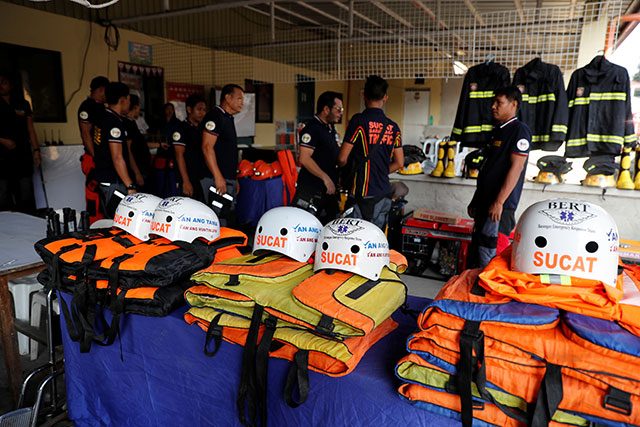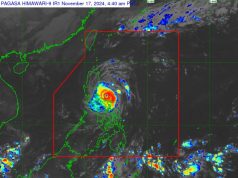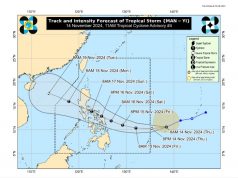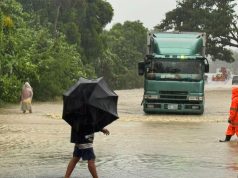
MANILA—Philippine authorities started to evacuate thousands of people from coastal areas on Thursday as a super typhoon with winds of more than 205 km per hour bore down on the country’s main island.
Typhoon Mangkhut is forecast to make landfall early on Saturday on the northern tip of Luzon island, and will be the strongest of 15 storms to have hit the Philippines this year.
Medical and emergency response teams were on stand by, heavy equipment mobilized and more than P1.7 billion of relief goods prepared as Mangkhut, known locally as Ompong, edged towards the storm-prone nation on its way towards southern China and northern Vietnam.
“What’s happening now is pre-emptive evacuation in certain areas,” said Manuel Mamba, governor of the northeastern province of Cagayan, where schools and offices were closed and police, military and coastguard told to be ready.
“There are no people on the streets as they are preparing for the storm,” he told a radio station.
Mangkhut, the Thai word for the fruit mangosteen, has a diameter of about 900 km, with gusts of up to 255 kph (158.5 mph).
It is drawing comparisons with Typhoon Haiyan, which devastated central areas of the archipelago nation in 2013, killing 6,300 people.
President Rodrigo Duterte and defence, interior and energy chiefs were given a briefing on emergency plans for a storm that could impact 4.3 million people, more than 800,000 of whom live in poverty.
“I worry especially for houses made of light materials,” said Marilou Cayco, governor of Batanes, a chain of seven remote islands 240 km (149 miles) off the mainland where she said up to 3,000 families could be “battered”.
Mangkhut has gathered strength since it struck the U.S. Pacific territories of Guam and the Northern Mariana islands overnight on Monday, tearing down trees and power lines and leaving hundreds of people homeless.
Its next destination is the Philippines, which on average sees 20 tropical storms a year.
“We are not just looking at floods. It could generate a storm surge upon landfall,” said Vicente Malano, administrator of Philippine weather agency PAGASA.
Residents boarded up windows and fortified homes in Santa Ana, a fishing town often battered by storms, where the weather was calm and sunny.
“People here in Santa Ana are ready to go anytime,” Alvin Belonio, a guest house worker, said by phone. “Those living near the shores left already.”
-Reporting by Neil Jerome Morales, Editing by Martin Petty, Robert Birsel









